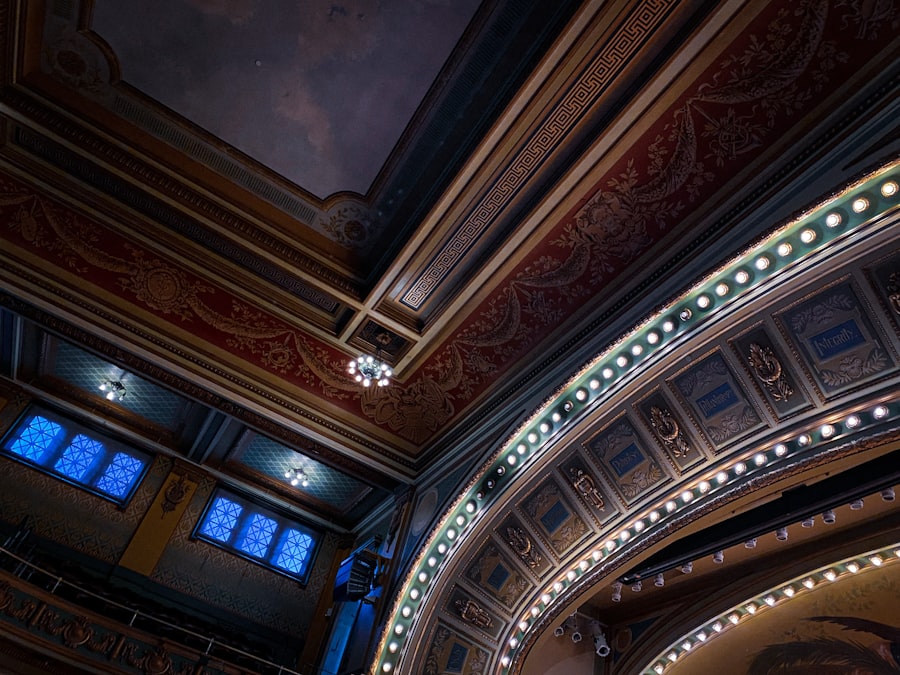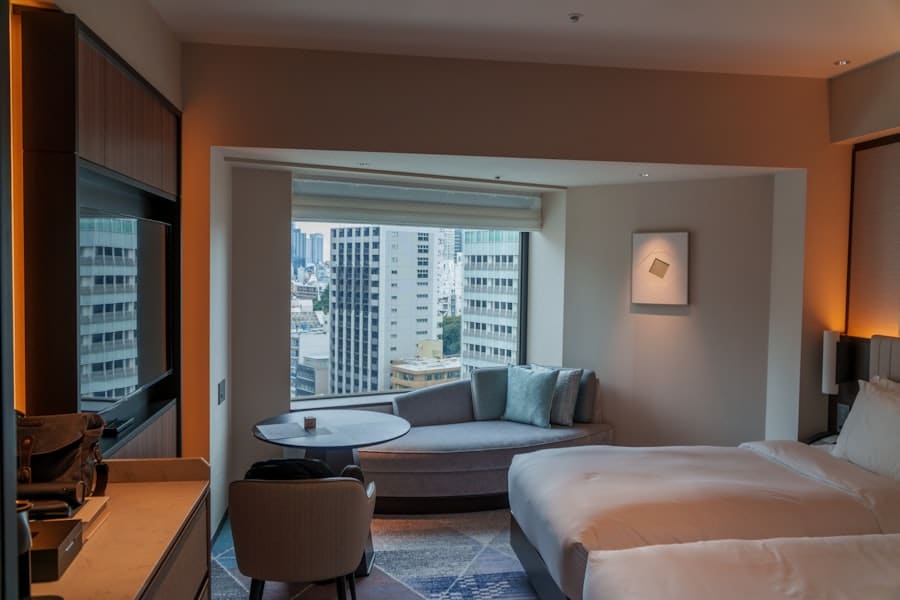Circadian rhythms are intrinsic biological processes that follow a roughly 24-hour cycle, influencing various physiological and behavioral functions in living organisms. These rhythms are regulated by an internal clock located in the suprachiasmatic nucleus (SCN) of the hypothalamus, which responds to external cues, primarily light and darkness. The SCN synchronizes the body’s internal clock with the external environment, ensuring that various bodily functions, such as sleep-wake cycles, hormone release, and metabolism, occur at optimal times.
This synchronization is crucial for maintaining overall health and well-being. The influence of circadian rhythms extends beyond sleep patterns; it affects mood, cognitive performance, and even immune function. For instance, disruptions to these rhythms can lead to a range of health issues, including sleep disorders, depression, obesity, and cardiovascular diseases.
The importance of circadian rhythms is underscored by the fact that they are present in nearly all living organisms, from humans to plants and even bacteria. Understanding these rhythms is essential for developing strategies to promote better health and well-being in our increasingly artificial environments.
Key Takeaways
- Circadian rhythms are the body’s natural internal clock that regulates the sleep-wake cycle and other physiological processes.
- Artificial lighting, especially blue light from electronic devices, can disrupt circadian rhythms and negatively impact sleep quality and overall health.
- Smart lighting systems can be programmed to mimic natural light patterns, supporting circadian health and improving overall well-being.
- Tunable lighting can provide benefits such as improved mood, productivity, and sleep quality by adjusting light color and intensity throughout the day.
- Designing a circadian-friendly lighting plan involves considering factors such as light color temperature, intensity, and timing to support natural circadian rhythms.
The Impact of Artificial Lighting on Circadian Health
Artificial lighting has become an integral part of modern life, illuminating our homes, workplaces, and public spaces. However, the prevalence of artificial light, particularly blue light emitted by electronic devices and LED lighting, poses significant challenges to our circadian health. Exposure to artificial light during the evening hours can interfere with the natural production of melatonin, a hormone that regulates sleep.
This disruption can lead to difficulties in falling asleep and maintaining restful sleep throughout the night. Moreover, the intensity and spectrum of artificial light can significantly impact our circadian rhythms. Studies have shown that exposure to bright white or blue light in the evening can shift the timing of our internal clock, leading to a phenomenon known as “phase delay.” This misalignment can result in chronic sleep deprivation and a host of related health issues.
For example, research has indicated that individuals who work night shifts or frequently use electronic devices late at night are at a higher risk for developing sleep disorders and metabolic syndrome. The challenge lies in finding ways to mitigate these effects while still benefiting from the advantages of artificial lighting.
Smart Lighting Systems and Circadian Health

Smart lighting systems represent a significant advancement in our ability to manage artificial light exposure in ways that support circadian health. These systems utilize advanced technology to adjust lighting conditions based on time of day, occupancy, and even individual preferences. By mimicking natural light patterns, smart lighting can help regulate our circadian rhythms more effectively than traditional lighting solutions.
For instance, smart lighting systems can automatically dim lights in the evening and shift their color temperature from cool blue tones to warmer hues as the sun sets.
Conversely, in the morning, these systems can gradually increase brightness and shift back to cooler tones to simulate a natural sunrise, promoting alertness and wakefulness.
Such features not only enhance comfort but also contribute to improved sleep quality and overall well-being.
Benefits of Tunable Lighting for Circadian Health
Tunable lighting refers to lighting systems that allow for adjustments in both intensity and color temperature throughout the day. This flexibility is particularly beneficial for supporting circadian health as it enables users to create an environment that aligns with their natural biological rhythms. Research has shown that exposure to warmer light during the evening can promote relaxation and prepare the body for sleep, while cooler light during the day can enhance alertness and productivity.
One concrete example of tunable lighting’s benefits can be seen in educational settings. Schools that have implemented tunable lighting systems report improved student focus and engagement during morning classes when cooler light is used. Conversely, as the day progresses and students prepare for afternoon activities or winding down for the day, warmer light can help create a more conducive environment for relaxation and social interaction.
This adaptability not only enhances learning outcomes but also supports students’ overall well-being by aligning with their natural circadian rhythms.
Designing a Circadian-friendly Lighting Plan
Creating a circadian-friendly lighting plan involves careful consideration of various factors, including the type of lighting used, its placement within a space, and the timing of illumination. A well-designed plan should prioritize natural light exposure during the day while minimizing artificial light exposure in the evening. Incorporating daylighting strategies, such as large windows or skylights, can help maximize natural light intake during daylight hours.
This includes choosing LED lights with adjustable color temperatures that can be tuned throughout the day. For instance, using cooler white light (5000K-6500K) during work hours can enhance alertness and productivity, while warmer white light (2700K-3000K) in the evening can promote relaxation and prepare individuals for sleep.
Furthermore, strategically placing task lighting in workspaces can reduce glare and eye strain while allowing for flexibility in adjusting brightness levels based on individual needs.
Implementing Smart Lighting Systems in Residential Spaces

The implementation of smart lighting systems in residential spaces offers numerous advantages for enhancing circadian health. Homeowners can benefit from automated lighting schedules that adjust based on their daily routines. For example, smart bulbs can be programmed to gradually brighten in the morning to simulate a natural sunrise, helping residents wake up more gently and feel more refreshed.
Moreover, smart lighting systems can be integrated with other smart home technologies to create a cohesive environment that supports well-being. For instance, when a homeowner activates their “sleep mode,” smart lights can dim gradually while also adjusting their color temperature to warmer tones. This integration not only enhances comfort but also reinforces healthy sleep habits by creating an environment conducive to relaxation.
Additionally, many smart lighting systems offer remote control capabilities through smartphone apps, allowing users to adjust their lighting even when they are away from home.
Implementing Smart Lighting Systems in Commercial Spaces
In commercial spaces such as offices, retail environments, and healthcare facilities, implementing smart lighting systems can significantly enhance employee productivity and customer experience while promoting circadian health. For instance, office environments equipped with smart lighting can adjust illumination levels based on occupancy and time of day. During peak working hours, brighter cool-toned lights can enhance focus and alertness among employees.
As the workday progresses toward evening hours, lights can gradually transition to warmer tones to signal winding down. Retail spaces can also benefit from smart lighting systems by creating dynamic environments that respond to customer behavior. For example, during busy shopping hours, brighter lights can be used to create an energetic atmosphere that encourages browsing and purchasing.
Conversely, during quieter times or after hours, softer lighting can create a more relaxed ambiance conducive to social interaction or leisurely shopping experiences. In healthcare settings, smart lighting can be tailored to support patient recovery by mimicking natural light patterns that promote healing and well-being.
Future Developments in Smart Lighting for Circadian Health
The future of smart lighting technology holds exciting possibilities for further enhancing circadian health through innovative solutions. As research continues to uncover the intricate relationship between light exposure and human biology, manufacturers are likely to develop even more sophisticated systems capable of personalizing lighting experiences based on individual needs and preferences. For instance, advancements in wearable technology may allow smart lighting systems to adjust automatically based on real-time data regarding an individual’s circadian rhythms.
Additionally, as sustainability becomes an increasingly important consideration in design and technology development, future smart lighting solutions may incorporate energy-efficient practices that align with circadian health principles. This could include integrating solar-powered systems that harness natural sunlight during the day while providing energy-efficient artificial lighting at night. Furthermore, ongoing research into the effects of different wavelengths of light on human health may lead to new innovations in tunable lighting technologies that optimize well-being across various settings.
In conclusion, understanding circadian rhythms is essential for promoting health and well-being in our modern world dominated by artificial lighting. By leveraging smart lighting systems and tunable lighting solutions, we can create environments that support our natural biological processes while enhancing productivity and comfort across residential and commercial spaces alike. As technology continues to evolve, we stand on the brink of a new era where our interactions with light will be more intentional and beneficial than ever before.
If you are interested in learning more about how technology can impact your daily life, you may want to check out

